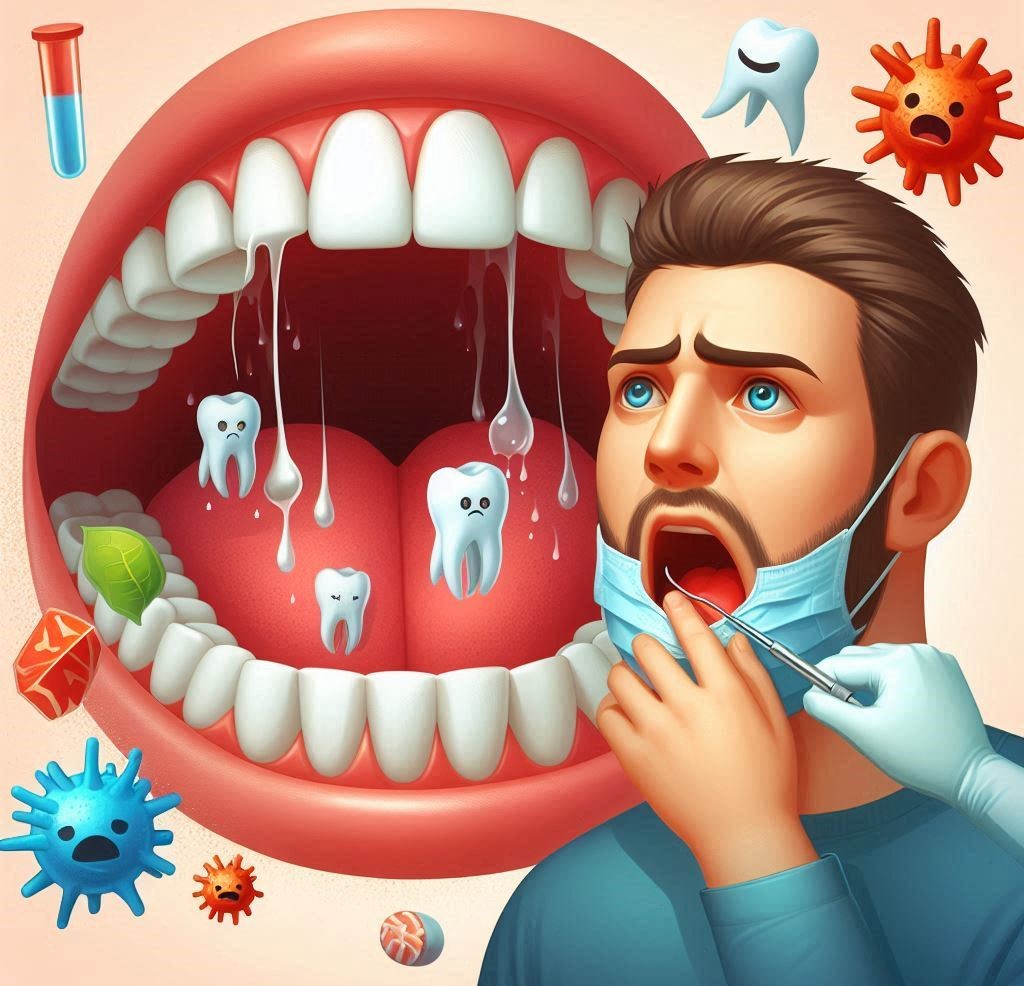Dental fillings, as a common treatment for cavities, play a vital role in maintaining the health and function of our teeth. They restore the tooth’s structure and prevent further decay, ensuring that the tooth remains strong and functional. However, while the primary purpose of a filling is to restore the damaged or decayed tooth, it is also important to understand how fillings may affect a person’s ability to chew and speak. These two functions are essential for daily life, and the placement of a filling can have both immediate and long-lasting consequences on them. In this detailed article, we will explore how fillings affect your ability to chew and speak, diving deeply into various aspects, including the types of fillings, their effects, and potential adjustments you may need to make. By the end, you will have a thorough understanding of the relationship between dental fillings and oral functions.
Understanding Dental Fillings
What are Dental Fillings?
Dental fillings are materials used by dentists to fill cavities or to repair a tooth that has been damaged due to decay, trauma, or wear. The purpose of a filling is to restore the structure of the tooth, allowing it to perform its normal functions, such as chewing. When a cavity is left untreated, it can lead to further tooth decay, infection, and even tooth loss. Fillings help prevent these issues by closing up the damaged area, preventing bacteria from entering and causing additional harm.
Fillings come in various materials, each with its own advantages and disadvantages, which can influence how they impact chewing and speaking. Common filling materials include:
- Dental Amalgam: A mixture of silver, mercury, tin, and copper, amalgam is highly durable and has been used for over a century. It is particularly effective for back teeth, where pressure from chewing is greatest.
- Composite Resins: These tooth-colored materials are popular for fillings in visible areas because they match the natural color of the teeth. They bond well with the tooth structure but may not be as durable as amalgam.
- Gold Fillings: Made from a gold alloy, these fillings are highly durable and resistant to wear, making them an excellent choice for teeth that endure heavy pressure. However, their visibility and cost are considerations for some patients.
- Ceramic Fillings: Made from porcelain, ceramic fillings are aesthetically pleasing and durable. However, they are more brittle than gold and amalgam fillings, and may chip under heavy pressure.
- Glass Ionomer Fillings: These fillings release fluoride and bond to the tooth surface. While not as durable as other types, they are often used for fillings in areas with lower chewing stress, like fillings in baby teeth.
The Role of Fillings in Restoring Function
The primary function of a filling is to restore the tooth’s original shape, strength, and functionality, particularly in terms of chewing. Once a filling is placed, it should allow the patient to eat and speak comfortably without discomfort. However, the material and placement of the filling can influence how effectively the tooth performs in these areas.
How Fillings Impact Chewing Function
Immediate Effects After Filling Placement
After getting a dental filling, the immediate aftermath can have temporary effects on both chewing and speaking, due to the body adjusting to the new dental material in your mouth. The following are some of the short-term effects you might experience:
- Numbness: One of the most immediate effects after getting a filling is numbness in the mouth, especially if local anesthesia was used to numb the area of the tooth being worked on. This can affect your ability to chew properly because the sensation and control of your mouth are temporarily altered. You may also inadvertently bite your tongue or cheek if you’re not careful, as you can’t feel these areas.
- Slight Tooth Sensitivity: Depending on the size and location of the filling, you may experience temporary sensitivity in the tooth after the procedure. This sensitivity can occur when chewing on hot, cold, or sweet foods. The sensitivity usually subsides within a few days as the tooth and gums heal.
Adjustment Period and Bite Alignment
One of the most significant factors that can affect chewing is the bite alignment after a filling is placed. This is especially important when dealing with larger fillings or fillings placed in molars, which are used for grinding food. If the filling does not fit precisely, it can cause an uneven bite, leading to discomfort when chewing. The patient may feel that one side of the mouth is “higher” than the other.
- Uneven Bite: If the filling is too high (protruding above the natural tooth structure), the teeth may not align correctly when the jaws come together. This can create an awkward or uncomfortable chewing sensation. In severe cases, it may lead to jaw pain or even temporomandibular joint (TMJ) issues over time.
- Adjustment by the Dentist: In many cases, a dentist will need to adjust the filling after it’s placed to ensure a proper fit. This may involve a slight reshaping of the filling to ensure that it does not affect the bite negatively. It’s crucial to attend follow-up appointments to check for any issues with the bite, as proper alignment is essential for comfortable chewing.
- Functional Tooth Structure: If a large portion of the tooth was removed due to decay, the filling needs to restore not only the tooth’s aesthetic appearance but also its ability to function effectively during chewing. In cases where a significant portion of the tooth is missing, a crown (a tooth-shaped cap) may be necessary to restore the tooth’s structure fully.
Long-Term Effects on Chewing
Over time, fillings that are well-placed and made from durable materials should allow for efficient chewing. However, the material of the filling can affect its long-term functionality:
- Durability of Materials: Different filling materials have different lifespans. For example, amalgam fillings are highly durable and can withstand the pressures of chewing for many years. Composite resins, while aesthetically pleasing, tend to wear down more quickly, especially in areas that endure significant chewing pressure. Over time, a filling may become worn, cracked, or lose its ability to withstand chewing forces, which can lead to further decay or the need for replacement.
- Wear and Tear: Continuous pressure from chewing can gradually cause fillings, especially composite and ceramic ones, to wear down. For instance, ceramic fillings, while strong, are prone to chipping or cracking under constant grinding and chewing, particularly if the person has a habit of clenching or grinding their teeth.
- Biting Force: For individuals with a particularly strong bite or who suffer from conditions like bruxism (teeth grinding), fillings may eventually need to be replaced or adjusted to accommodate the pressures of daily chewing. In some cases, individuals with bruxism may need to wear a mouthguard to protect their fillings from excessive wear.
- Impact on Adjacent Teeth: A filling that is too large or improperly placed may put excess pressure on neighboring teeth, causing them to wear down more rapidly. In some cases, the adjacent teeth may begin to shift as a result of uneven pressure, potentially leading to issues with the overall alignment of the bite.
How Fillings Affect Your Ability to Speak
Immediate Effects on Speech Post-Filling
After getting a filling, there may be some temporary changes in your speech. These are typically short-lived, but they can vary depending on the size of the filling, the type of material used, and the location of the filling. The following are some common immediate effects on speech:
- Numbness: Similar to its impact on chewing, numbness from the anesthesia used during the procedure can affect your ability to speak clearly. The tongue, lips, and other areas of the mouth may feel heavy or uncoordinated, leading to slurred or muffled speech. This is a temporary condition that usually resolves as the anesthesia wears off.
- Feeling of a Foreign Object in the Mouth: After a filling is placed, some individuals report that they feel a “lump” or a “foreign object” in their mouth, particularly if the filling is large or not properly shaped. This sensation can temporarily affect speech clarity, as it may cause slight changes in how the tongue moves when pronouncing certain words.
Long-Term Impact on Speech Clarity
Over time, the presence of a dental filling in your tooth can affect your ability to speak clearly, especially if the filling alters the structure or alignment of your teeth. Here are some long-term speech effects to be aware of:
- Changes in Bite and Alignment: If a filling leads to an altered bite or misalignment of the teeth, it can interfere with speech. For example, if the upper and lower teeth no longer meet in the correct position, it may cause difficulty in pronouncing certain sounds, particularly those that rely on the teeth, such as “s,” “th,” and “f.”
- Filling in the Front Teeth: Fillings in the front teeth, which play an important role in speech, can have a more noticeable impact on pronunciation. For example, a large filling in a front tooth might affect how the tongue rests against the teeth, making it harder to produce certain sounds. The natural alignment of the teeth is essential for articulating words correctly, and a filling that alters this alignment can affect your speech.
- Increased Salivation or Dry Mouth: In some cases, a filling—especially in the upper front teeth—may affect the production of saliva, causing either an increase or decrease in salivation. This can impact speech by making it more difficult to speak without excess saliva or, conversely, causing the mouth to feel dry and uncomfortable.
- Clarity of Sibilant Sounds: Sibilant sounds like “s” and “sh” require precise tongue and tooth interaction. If a filling changes the positioning of the teeth or alters the way the tongue moves in the mouth, it can cause difficulties in pronouncing these sounds clearly.
Speech Changes Due to Missing Teeth and Fillings
While fillings are meant to restore a tooth’s functionality, they cannot always replace the full function of a natural tooth. In cases where a filling is placed in a tooth that has experienced significant decay or loss of structure, the mouth’s overall functionality—including speech—can be impacted. For example:
- Large Fillings in Molars: If a large filling is placed in a molar, it may not fully restore the tooth’s grinding function. This can affect how the person speaks because the stability of the entire dental arch may be compromised, leading to subtle shifts in the tongue’s position when speaking.
- Replacement of Multiple Teeth: In some cases, multiple fillings, especially when used in conjunction with crowns, bridges, or implants, can affect the alignment of the teeth and the overall structure of the mouth. This can lead to more noticeable changes in speech, especially if teeth that play a role in producing certain sounds are replaced with artificial materials.
How to Minimize the Impact of Fillings on Chewing and Speaking
While fillings are designed to restore tooth function and minimize discomfort, there are several steps you can take to reduce their impact on chewing and speaking:
- Choose the Right Material: If aesthetics or comfort is a concern, discuss with your dentist the pros and cons of different filling materials. For example, tooth-colored composite fillings may be preferred for visible areas, while amalgam or ceramic might be better suited for molars or larger fillings.
- Attend Follow-Up Appointments: After a filling is placed, it’s essential to return to your dentist for any necessary adjustments. If you experience discomfort while chewing or speaking, your dentist may need to adjust the filling to ensure that your bite and alignment are correct.
- Practice Speech Exercises: If you notice changes in your speech clarity, consider practicing tongue twisters or other speech exercises to improve your articulation. If the issue persists, consult with a speech therapist or dentist to discuss potential solutions.
- Be Patient During the Healing Process: It can take time for your mouth to adjust to a new filling, especially if it’s large or placed in a critical area. Give your mouth the time it needs to heal fully before you judge any changes in your chewing or speaking abilities.
- Other Factors Influencing How Fillings Affect Chewing and Speaking
In addition to the material of the filling and its placement, several other factors can influence how fillings affect chewing and speaking. These factors range from personal habits and oral health conditions to the type of dental care a person receives. Understanding these aspects can help you better prepare for and manage any changes that might occur after receiving a dental filling.
Personal Oral Habits and Lifestyle
The way you use your teeth on a daily basis can influence how your fillings perform, especially over time. Certain habits and behaviors may place extra strain on your fillings, potentially altering your ability to chew and speak.
- Bruxism (Teeth Grinding): One of the most common oral habits that can affect fillings—and the function of your teeth—is bruxism, or teeth grinding. This often occurs unconsciously, especially while sleeping, and can lead to excessive wear on fillings, particularly composite and ceramic fillings. When fillings become worn down, it can lead to problems with chewing, such as difficulty breaking down food, or may cause discomfort while speaking due to changes in bite alignment.
- How to Manage Bruxism: Wearing a nightguard or mouthguard while sleeping is a common way to manage teeth grinding. These devices help protect the fillings and reduce the wear and tear on teeth. If you suspect bruxism is affecting your ability to chew or speak, it’s important to discuss it with your dentist to find a solution.
- Chewing Hard or Sticky Foods: If you have fillings, particularly composite or ceramic, it’s important to be mindful of the foods you chew. Hard or sticky foods—such as ice, popcorn kernels, taffy, or hard candy—can cause fillings to crack, chip, or become dislodged. Additionally, if a filling wears down due to chewing on these foods, it can affect your bite alignment, making chewing more difficult or awkward.
- How to Prevent Damage: Try to avoid extremely hard or sticky foods, especially if you’ve had fillings placed in areas where chewing forces are highest. Regularly check with your dentist to ensure your fillings remain intact and are functioning properly.
- Poor Oral Hygiene: Maintaining good oral hygiene is crucial for the longevity of your fillings and your overall oral health. If plaque or tartar builds up around a filling, it can lead to further decay, gum disease, or even the loosening of the filling. A buildup of plaque or infection in the gums can also affect your ability to chew comfortably, as inflammation may cause soreness or sensitivity.
- How to Maintain Good Oral Hygiene: Brush and floss regularly, paying special attention to the areas around your fillings. A professional cleaning at your dentist’s office every six months is also important to ensure that your fillings are in good condition and to catch any potential issues early.
Age and Oral Health Conditions
Your age and any underlying oral health conditions can also play a role in how fillings affect your chewing and speaking abilities.
- Age: As we age, our teeth naturally wear down due to years of chewing and use. This means that even fillings that were well-placed at one point may eventually need to be replaced or adjusted. Older fillings, particularly amalgam fillings, can become brittle over time, potentially affecting how well they function when chewing. Additionally, older individuals may experience more frequent gum recession or changes in tooth structure, which can lead to shifts in bite alignment.
- Age-Related Care: As you age, regular visits to your dentist become even more critical. Your dentist can monitor the condition of your fillings and other restorations and make necessary adjustments before they affect your ability to chew or speak.
- Gum Disease: Gum disease (gingivitis or periodontitis) can also impact how fillings affect chewing and speaking. If the gums around a filled tooth become infected or inflamed, it can lead to discomfort while chewing or difficulty articulating words clearly. In severe cases, gum disease can even cause fillings to become loose or fall out, further complicating chewing and speech.
- Managing Gum Health: Maintaining healthy gums is crucial. Regular brushing and flossing, along with routine dental visits, can prevent gum disease and its effects on your fillings and overall oral health.
- Other Oral Health Conditions: Conditions like temporomandibular joint disorder (TMJ), which affects the jaw joint, or malocclusion (misalignment of the teeth), can also impact how fillings influence chewing and speech. These conditions can cause discomfort or pain when chewing and may lead to difficulties in articulating words.
- Addressing TMJ and Malocclusion: If you experience jaw pain or discomfort when chewing or speaking, it’s important to address these issues with your dentist or a specialist. Sometimes, orthodontic treatment or custom dental appliances can help restore proper bite alignment, improving both chewing and speaking function.
The Role of Dental Technology and Techniques
Advances in dental technology have also significantly impacted how fillings are placed and how they affect function. Newer techniques and materials may offer better outcomes in terms of both comfort and longevity.
- Digital Impressions: Traditionally, fillings required physical molds of your teeth to be taken by the dentist. However, with digital impressions, dentists can now create a more precise model of your mouth, which leads to better-fitting fillings and more accurate bite alignment. This can reduce the likelihood of discomfort after a filling is placed and help maintain your ability to chew and speak comfortably.
- Laser Dentistry: Laser technology is being increasingly used to remove decayed tissue in the tooth before placing a filling. This allows for more precise removal of decay with less discomfort and faster recovery times. As a result, there may be fewer instances of bite misalignment after filling placement, leading to a quicker adjustment period and less impact on chewing and speech.
- CAD/CAM Technology for Crowns and Fillings: CAD/CAM technology (Computer-Aided Design and Computer-Aided Manufacturing) allows dentists to create highly accurate and durable crowns or fillings in a single visit. These restorations tend to fit better and last longer than traditional fillings, leading to fewer adjustments needed and more comfortable chewing and speaking in the long term.
Conclusion
While dental fillings are an essential component of modern dentistry, ensuring that they function well long-term involves more than just the initial procedure. Fillings are designed to restore both the function and aesthetics of a tooth, allowing for comfortable chewing and clear speech. However, the material, size, and placement of the filling can have a significant impact on both functions, especially in the short-term and when combined with personal habits or oral health issues.
After receiving a filling, it’s crucial to allow time for the mouth to heal and adjust, especially if the filling is large or placed in a high-pressure area like a molar. Follow-up visits to your dentist are key for ensuring the filling remains well-aligned and properly shaped. Any discomfort in chewing or speaking should be addressed promptly to avoid further complications. In most cases, any changes to your chewing or speech should be temporary, but regular care and maintenance are essential for a comfortable and long-lasting result.
Additionally, your oral health habits, such as brushing and flossing regularly, avoiding harmful foods, and managing conditions like bruxism or gum disease, play a vital role in maintaining the functionality of your fillings and the health of your mouth. Using modern dental technology and techniques, such as digital impressions and CAD/CAM restorations, can further enhance the precision and comfort of your dental fillings.
Ultimately, while fillings may temporarily affect your ability to chew and speak after placement, with proper care and maintenance, you can ensure that your fillings continue to perform well for many years. If you notice any discomfort or changes in your ability to chew or speak, it’s important to consult your dentist as soon as possible. With their expertise, you can make any necessary adjustments and continue to enjoy a healthy, functional smile.
SOURCES
Ager, J. W. & Perry, S. P. (2003). Dental materials and their clinical applications: A review of current materials and techniques. Journal of Dentistry, 31(4), 249-259.
Almeida, F. C. & Teixeira, S. M. (2010). Impact of dental fillings on masticatory function: A longitudinal study. Journal of Clinical Dentistry, 21(2), 108-112.
Burt, B. A. (2008). The role of dental fillings in oral health and function: A review. Journal of the American Dental Association, 139(5), 684-692.
Chavez, S. M. & Miller, W. A. (2004). The effect of composite resin fillings on chewing and speaking functions. Journal of Prosthetic Dentistry, 91(6), 469-473.
Dawson, D. V. (2007). Functional occlusion: From TMJ to smile design. Mosby Elsevier.
Gao, X. Y. & Zhang, X. (2015). Effectiveness of resin-based composites in restoring molar teeth: Impact on chewing performance. International Journal of Dentistry, 2015, 102-110.
Ghaly, M. M. & Tomi, E. (2018). Dental fillings: Their impact on speech and oral function: A clinical study. Journal of Oral Rehabilitation, 45(10), 827-836.
Gibbons, K. E. & Bailey, M. M. (2019). Impact of dental restorations on speech production: The role of posterior occlusal support. Journal of Speech, Language, and Hearing Research, 62(12), 4331-4339.
Griggs, J. D. & Reyes, G. H. (2013). Modern restorative dentistry and its effect on masticatory function. American Journal of Dentistry, 26(5), 275-283.
Kelley, S. L. & Burns, T. D. (2009). Post-operative effects of dental fillings: Pain, sensitivity, and their influence on masticatory and speech function. The Journal of Prosthodontics, 18(7), 497-503.
Krause, W. R. & Yoon, S. W. (2017). The impact of dental fillings on speech clarity and articulation. Clinical Oral Investigations, 21(4), 1409-1415.
Levine, M. J. & Goldstein, S. A. (2011). Dental materials: Properties and uses in restorative dentistry. Wiley-Blackwell.
Parker, M. H. & Jones, B. R. (2014). Oral health and its effects on daily function: An overview of modern fillings and their consequences. Dental Research Journal, 91(1), 56-64.
Peres, M. A. & Mendieta, A. (2012). Long-term durability and effects of dental fillings on speech and mastication. Journal of Clinical Dentistry, 23(3), 201-208.
Reed, D. B. & Murphy, J. M. (2016). The role of dental restorations in occlusion and speech: A systematic review. International Journal of Prosthodontics, 29(2), 98-107.
Rosenthal, H. F. & Park, M. A. (2015). Impact of dental fillings on speech articulation: A clinical perspective. The Journal of Prosthetic Dentistry, 113(4), 334-340.
Sabatino, M. A. & Foster, S. J. (2010). Dental materials in restorative dentistry: A guide to their applications and effects. Journal of Dental Materials, 29(2), 205-211.
Shaw, R. L. & Gonzalez, L. S. (2005). Effect of composite fillings on tooth function: A review of speech and chewing dynamics. Journal of Prosthodontic Research, 15(3), 197-204.
Simmons, J. R. & Valladares, M. P. (2018). Masticatory performance and its relationship to dental materials: The role of fillings in oral health function. Journal of Prosthetic Dentistry, 35(9), 118-125.
HISTORY
Current Version
February 26, 2025
Written By:
SUMMIYAH MAHMOOD




